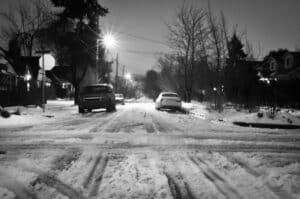
Understanding the risks
Winter weather can slow down traffic by over 30 percent and severely limit visibility. It is common for vehicles, especially smaller cars, to skid and fishtail. Lanes can be obstructed by snowbanks and debris, which can be even more dangerous if drivers can’t see them from a distance. After a storm, melting snow can become slush and refreeze, creating more ice. Vehicle crashes in these conditions account for nearly 900 deaths and nearly 76,000 injuries annually.
How to be prepared
By being aware of the weather forecast in the winter, you can prepare yourself for the commute. If possible, stay home when a storm passes through. If that isn’t an option, then you should know how to stay safe. Besides checking the weather, have a mechanic check the following vehicle systems before heading out on the road:
- Ignition
- Brakes
- Wiring
- Hoses and fan belts
- Spark plugs
- Air, fuel and emissions filters, and PCV valve
- Distributor
- Battery
- Tire wear and air pressure
- Antifreeze level and freeze line
If your vehicle breaks down or is disabled in any other way, do not abandon it. If you have flares, light them in front and behind the car and make sure the exhaust pipe is not blocked by snow, mud or any other object. Along with flares, consider bringing a shovel, high energy foods, a first aid kit, and other supplies to help you if you get stuck in an unfamiliar place.
When driving in the snow, be cautious. That means not using cruise control, slowly changing speeds, and giving more distance between yourself and the vehicle in front of you. Anti-lock brakes and traction control can help you keep control of your vehicle. Both technologies are standard in most new vehicles.
Taking Action After a Crash
Even if you take every precaution to reduce your risk of an accident when driving in winter weather, other drivers may be inexperienced or careless. If you are injured in a car accident due to snow or ice, you may be entitled to compensation, but such compensation is not always guaranteed. It is important to take strong legal action and contact an experienced automobile accident law firm. That way, you can make sure your rights are properly protected.
Call or email a car accident attorney today at Zbinden & Curtis for your free and confidential consultation.
This entry was posted on Thursday, February 7th, 2019 at 8:00 pm and is filed under Car Accidents. You can follow any responses to this entry through the RSS 2.0 feed. You can leave a response, or trackback from your own site.









